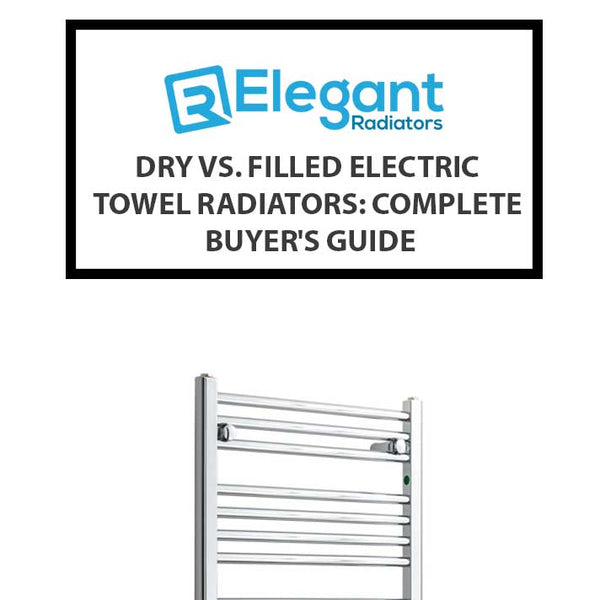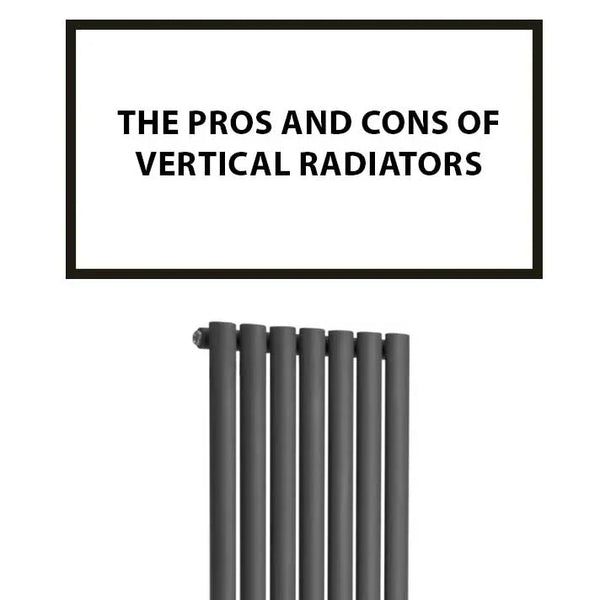Can I Paint The Towel Rail Radiators?

Photo: Tekzen
Is your towel rail radiator looking a bit tired? A flash of peeling chrome or a discoloured finish can really let a bathroom down. But before you splash out on a brand-new replacement, have you considered painting it? This expert guide will walk you through everything you need to know to achieve a flawless, long-lasting finish.
Can You Really Paint a Heated Towel Rail?
The short answer is: yes, you absolutely can! However, the success of the project entirely depends on the material of your radiator and, most importantly, the quality of your preparation.
- Powder-Coated/Painted Steel: These are the easiest to paint. The existing surface provides a great base for new paint to adhere to.
- Stainless Steel & Aluminium: These can be painted successfully with the right metal primer and preparation.
- Chrome Radiators: This is the big one. Painting chrome is notoriously difficult. Its super-smooth, non-porous surface is designed to repel things, including paint. It is possible, but it requires meticulous preparation to avoid peeling and flaking down the line.
Step 1: Preparation is Everything
Do not skip this stage. 90% of paint failures are due to poor prep. A flawless finish is earned here.
Tools & Materials
- Dust sheets and masking tape
- Cleaning cloths
- Sugar soap or a good degreaser
- Sandpaper (a mix of medium 120-grit and fine 240-grit)
- High-quality metal primer (a self-etching primer is essential for chrome)
- Specialist radiator paint (either brush-on or spray)
- Good quality paint brushes or a spray gun
- Personal Protective Equipment (PPE): gloves, goggles, and a mask
The Process
- Safety First: Turn off your central heating and ensure the radiator is completely cold. For the best result, it's highly recommended to drain the radiator and remove it from the wall. This allows you to reach every nook and cranny. If you're not confident doing this, consult a plumber.
- Clean Thoroughly: Give the entire radiator a deep clean with sugar soap to remove all grease, dust, and bathroom residue. Rinse with clean water and dry completely.
-
Sand the Surface: This is the most crucial step, especially for chrome. You need to create a "key" for the primer to grip onto.
- For painted radiators, a light sand with fine-grit paper is fine.
- For chrome, you need to be more aggressive. Use medium-grit sandpaper to remove the mirror-shine completely. The surface should be uniformly dull and slightly rough to the touch.
- Wipe Down: After sanding, wipe away all dust with a damp cloth and allow it to dry fully.
Step 2: Priming and Painting
Now for the transformation. Remember, patience and thin coats are your best friends here.
Applying the Primer
Using the correct primer is vital. Apply one or two thin, even coats of your chosen metal primer. For chrome, use a self-etching primer. This type of primer contains acid that microscopically etches the surface, creating a superior bond that regular primer just can't achieve. Allow it to dry completely according to the manufacturer's instructions.
Choosing and Applying the Paint
You must use a paint specifically designed for radiators. Standard emulsion or gloss will crack, yellow, and peel when exposed to the heat cycles. Specialist radiator paint is formulated to be heat-resistant and flexible.
- Brush Painting: Use a good quality brush and apply two or three thin coats rather than one thick one. This prevents drips and gives a much smoother finish. Allow each coat to dry fully before applying the next.
- Spray Painting: This can give a fantastic, factory-like finish. If you've removed the radiator, spray it outdoors. If not, mask the surrounding area extensively to protect from overspray. Apply several light coats, keeping the can moving to avoid runs.
Step 3: Curing and Re-installing
You've done the hard work, but don't rush this final step.
The paint needs time to cure and harden properly. Leave the radiator to dry for at least 24-48 hours before handling or re-installing it. Once re-installed and re-filled, it's a good idea to turn the heating on low initially to help the paint cure fully with the heat.
Expect a slight paint smell for the first few times the radiator heats up. This is normal as the solvents cure, and it will disappear quickly with good ventilation.
Alternatives to Painting
If the preparation for painting chrome seems too daunting, consider these alternatives:
| Option | Pros | Cons |
|---|---|---|
| Professional Powder Coating | Extremely durable, flawless finish. A huge range of colours. | More expensive (£80-£150+), requires removing the radiator. |
| Vinyl Wrapping | No mess, can be applied in-situ, wide variety of designs. | Can be tricky to apply without bubbles, durability can vary. |
| Buying New | Guaranteed finish, chance to upgrade style and efficiency. | Most expensive option, potential plumbing costs. |
Frequently Asked Questions (FAQ)
1. Can I use any metal paint on my radiator?
No, you must use a specialist radiator paint. These paints are specifically designed to withstand high temperatures and the expansion and contraction of the metal without cracking or peeling. Standard metal paints like Hammerite are not always suitable for the constant heat cycles of a radiator.
2. Do I really have to sand a chrome radiator?
Yes, 100%. This is the most critical step. Chrome is a non-porous, slick surface. Without sanding it to a dull, rough finish, the primer and paint have nothing to grip onto and will inevitably peel off, often in a matter of weeks.
3. Will painting my radiator reduce its heat output?
No, this is a common myth. A few thin coats of specialist radiator paint will have a negligible effect on heat output. In fact, painting a shiny chrome radiator with a matte or satin paint can slightly improve its ability to radiate heat.
4. How long does the paint smell last?
The paint odour is from the solvents curing and should only be noticeable for the first two or three times the radiator heats up. Ensure good ventilation in the room during this period, and the smell will dissipate quickly.
5. Can I paint a rusty towel rail?
Yes. You must first treat the rust. Sand the rusty spots back to bare, clean metal. Then, treat the area with a rust converter before applying a rust-inhibiting metal primer and your top coats.
6. Spray paint or brush paint – which is better?
Both have their pros and cons. Spraying can give a smoother, factory-like finish but requires more prep and masking. Brushing gives you more control and is less messy but can leave brush marks if not done carefully with a good brush and thin coats.
7. What colour should I paint my radiator?
This is up to you! For a seamless look, match the radiator to your wall colour. For a statement piece, choose a bold, contrasting colour like matte black, anthracite grey, or even a deep blue or green.
8. Do I need to remove the radiator to paint it?
It is highly recommended. Removing it allows you to clean, sand, and paint every surface perfectly for a much more professional and durable finish. Painting it on the wall is possible, but it's very fiddly and hard to get an even result on the back and between the bars.
9. My chrome radiator is peeling after I painted it. What went wrong?
The most likely cause is inadequate preparation. Either the surface was not sanded thoroughly enough, or a self-etching primer was not used. Unfortunately, the only fix is to strip the paint off, sand the chrome properly, and start again.
10. Can I paint the radiator valves as well?
Yes, you can paint the body of the valves to match the radiator. Prepare them in the same way (clean and sand). Be very careful not to get any paint on the moving parts or the central pin, as this could cause the valve to seize up.







